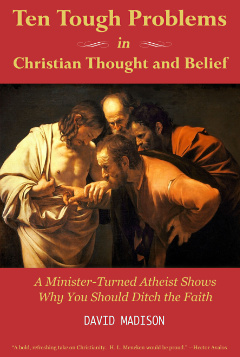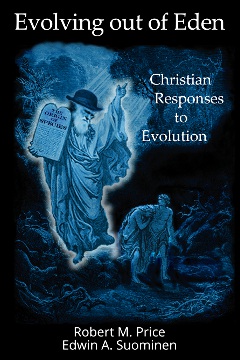Apparitions of Jesus
The Resurrection as Ghost Story
I was far from the first to have noticed that the post-mortem sightings of Jesus were spectral in nature. Celsus, a Roman philosopher and opponent of Christianity who lived in the 2nd century, made precisely that observation 18 centuries ago–“[Celsus] considers the appearance of Jesus to his disciples after rising from the dead to be like a ghost (phasma) hovering before their sight” (Origen, Contra Celsum).
—“Introduction,” Apparitions of Jesus
When it came time to tell the central story of Christianity, to explain how and why a man came back from the grave, the New Testament writers used the only resources available to them: the language and frames of reference current in their culture–the culture of Judaism and the Old Testament, and the wider Greco-Roman culture in which Judaism was embedded. So it’s hardly surprising that we’ve encountered visions in the New Testament similar to stories of visions from Greco-Roman sources, or that terms from the nearly ubiquitous mystery cults find their way into the letters of Paul and his imitators. That common elements of ghost lore should also appear in stories of Jesus, returned from the grave to make a brief appearance to his disciples, is less surprising still.
—“Wrapping Up,” Apparitions of Jesus
Could the folklore of ancient ghost stories be the basis for the
resurrection accounts of the New Testament? Recent scholarship
surveyed in Apparitions of Jesus suggests that early Christians
poured their heady new wine–a man saved the world by rising from the
dead–into the old wineskins of familiar legend.
Combining his own research with the insights of publications past and
present, Robert Conner leads us down haunted hallways of Greco-Roman
ghost lore to illuminate neglected corners of the gospels. Along the
way, finding yet another human side to the beloved old tales, we
understand how ghostly apparitions were spoken about for much the same
reason modern-day people still see them: a psychological response
vividly experienced by those suffering great loss.
Conner studied Greek and Hebrew at Western Kentucky University from
1975 through 1977. Since 1983, he has published books and articles on
electrocardiography, a novel, three books on magic in early
Christianity, and a study of the “Secret” gospel of Mark
controversy. He has always been fascinated with languages and enjoys
reading the gospels in their original tongue.
Reviews
We know the New Testament authors believed in ghost stories (Matt. 14:25-26; Luke 24:37). Was the resurrection tale of Jesus one of them? The Jesus we read about certainly had ghost-like qualities. He could appear mysteriously (Luke 24:36), go through closed doors (John 20:19), and vanish at will (Luke 24:31). These were some essential characteristics of Greco-Roman ghost folklore. In this provocative and insightful groundbreaking book, Robert Conner argues the resurrection tale is a ghost story from ancient superstitious people.
—John W. Loftus, author of Unapologetic: Why Philosophy of Religion Must End; editor, The Christian Delusion.
In Apparitions of Jesus: The Resurrection as Ghost Story, Robert Conner provides a handy survey of the thought world from whence the New Testament arose. The gospel writers, Conner points out, “were willing and able to plagiarize material from the broader Greco-Roman culture.” Those who don’t know this context fail to grasp the obvious: The contradictory and fanciful accounts of the resurrection, and confusion regarding a physical or spiritual resurrected body: “the gospel writers drew upon a fund of shared cultural assumptions about how ghosts behave.”
And no surprise: Jesus had high ranking in the spiritual world, giving him status among demons. Conner also discusses the apostle Paul, who thought he knew this dimension, and helped poison the Christian well. Conner sheds light on the origins of relic venerationfrom which it is not a big leap to the eating of god (the Eucharist). Conner has written a highly readable, fun book; Christians should treat themselves to this adventure, and give copies to their pastors. And vice versa.
—David Madison, author of Ten Tough Problems in Christian Thought and Belief: a Minister-Turned-Atheist Shows Why You Should Ditch the Faith.









